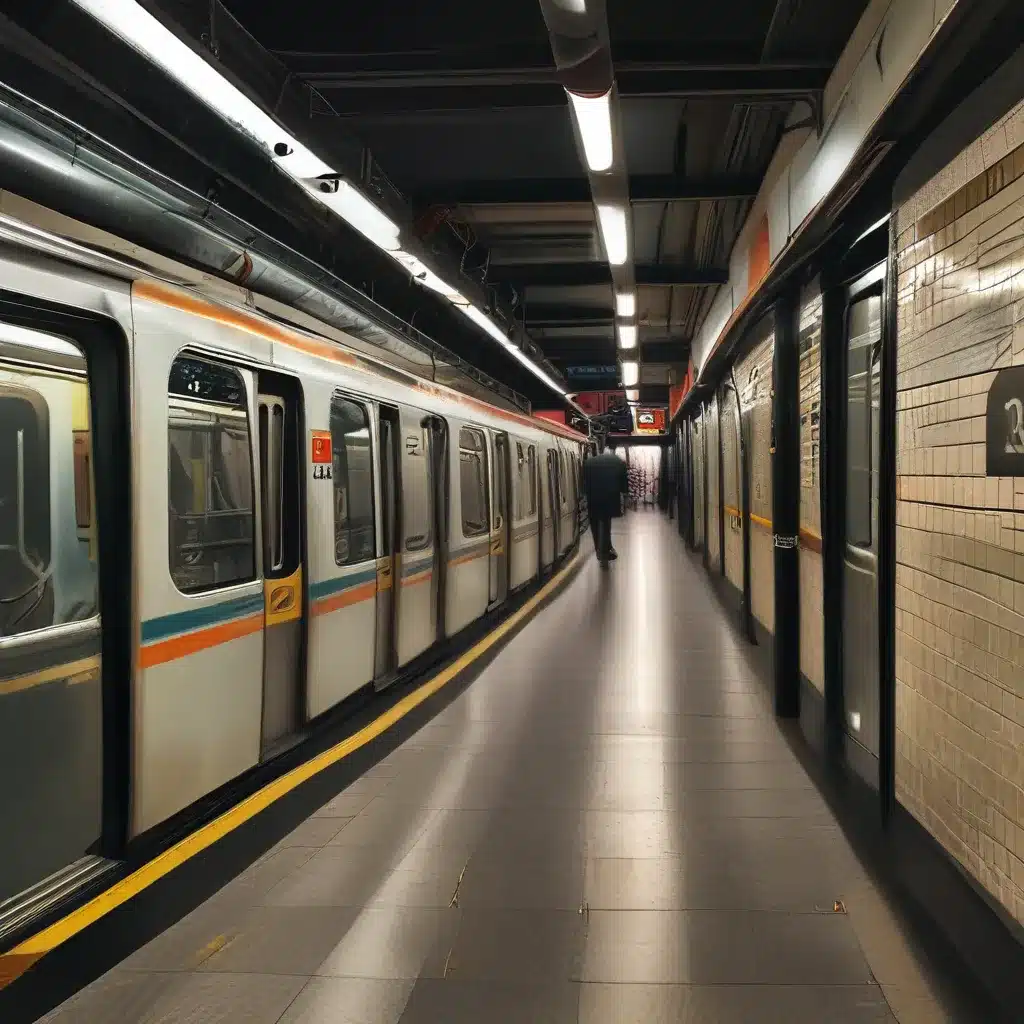
Navigating the Seoul Subway Like a Local
As a first-time visitor to Seoul, the prospect of tackling the city’s massive subway system can feel a bit daunting. With over 300 stations spanning 9 color-coded lines, it’s easy to get lost or feel overwhelmed. But fear not, my fellow traveler – I’m here to share my insider tips and tricks to help you conquer the Seoul subway like a pro.
Let’s start with the basics. The Seoul subway, officially known as the Seoul Metropolitan Subway, is the largest and most comprehensive rapid transit system in South Korea. It’s a marvel of engineering, carrying over 7 million passengers each day. And the best part? It’s incredibly affordable, with a flat fare of just 1,500 won (about $1.20 USD) per ride.
Now, I know what you’re thinking – “That’s all well and good, but how do I actually use this thing?” Well, my friend, that’s where my expertise comes in. As a Seoul local, I’ve had my fair share of subway adventures, from getting lost in the labyrinth of underground tunnels to accidentally hopping on the wrong train. But through it all, I’ve learned a thing or two about navigating the system like a seasoned pro.
Mastering the Subway Map
First and foremost, the subway map is your best friend. The Hotel Stay in Seoul has a handy one available in their lobby, but you can also find digital versions online. Take a few minutes to familiarize yourself with the lines, colors, and station names before you venture out. Trust me, this will save you a lot of headaches down the line.
One crucial thing to remember is the difference between “express” and “local” trains. Express trains skip certain stations, so if you’re not paying attention, you could end up overshooting your stop. To avoid this, always check the signs on the platform to make sure you’re getting on the right train.
Speaking of platforms, it’s important to know which side of the station you need to enter. In Seoul, the trains run in both directions, so you’ll want to make sure you’re on the correct platform, heading in the right direction. Look for the signs that say “Uptown” or “Downtown” to avoid any confusion.
Navigating the Stations
Now that you’ve got the map figured out, it’s time to tackle the stations themselves. The Seoul subway is a well-oiled machine, but it can still be a bit of a maze if you’re not prepared.
One of the best tips I can give you is to always keep your eyes peeled for the station exit signs. These will point you in the right direction, whether you’re trying to reach the street level or transfer to a different line. And if you’re ever unsure, don’t be afraid to ask a local for help – Seoulites are generally quite friendly and eager to assist lost tourists.
Another crucial piece of advice: invest in a T-money card. This reusable smart card allows you to tap in and out of the subway system without having to worry about buying a new ticket every time. It’s convenient, efficient, and can even be used on buses and taxis throughout the city.
Navigating the Trains
Ah, the trains themselves – the beating heart of the Seoul subway system. These sleek, modern vehicles may seem intimidating at first, but once you get the hang of them, they’re a breeze to use.
First and foremost, always be aware of your surroundings. The trains can get quite crowded, especially during rush hour, so keep a close eye on your belongings. Pickpockets are a reality, but as long as you’re mindful, you should be just fine.
Another tip: don’t be afraid to ask the conductor for help if you’re unsure of where to get off. They’re usually more than happy to point you in the right direction, and some even have a basic understanding of English.
And finally, one of the most important things to remember: mind the gap! Seoul’s subway cars are incredibly efficient, but the space between the train and the platform can be quite treacherous. So be sure to watch your step as you board and disembark.
Timing is Everything
One of the great things about the Seoul subway is that it runs 24 hours a day, 7 days a week. However, it’s important to note that the frequency of trains can vary depending on the time of day.
During rush hour (typically between 7 am and 9 am, and 6 pm to 8 pm), the trains run more frequently, with some lines operating every 2-3 minutes. But outside of these peak times, you may have to wait a bit longer – sometimes up to 10 minutes or more.
To make the most of your subway experience, I’d recommend planning your trips accordingly. If you’re in a hurry, try to avoid the busiest times of day. And if you’re not in a rush, take advantage of the off-peak hours to enjoy a more relaxed, less crowded ride.
Putting it All Together
Navigating the Seoul subway may seem like a daunting task at first, but with a little preparation and a willingness to embrace the adventure, you’ll be zipping around the city like a seasoned local in no time.
Remember: always have your subway map handy, invest in a T-money card, and be mindful of your surroundings. And most importantly, don’t be afraid to ask for help – the Seoulites are a friendly bunch, and they’ll be more than happy to point you in the right direction.
So what are you waiting for? Start planning your Seoul subway adventure today, and get ready to explore this incredible city like never before. Happy travels!

